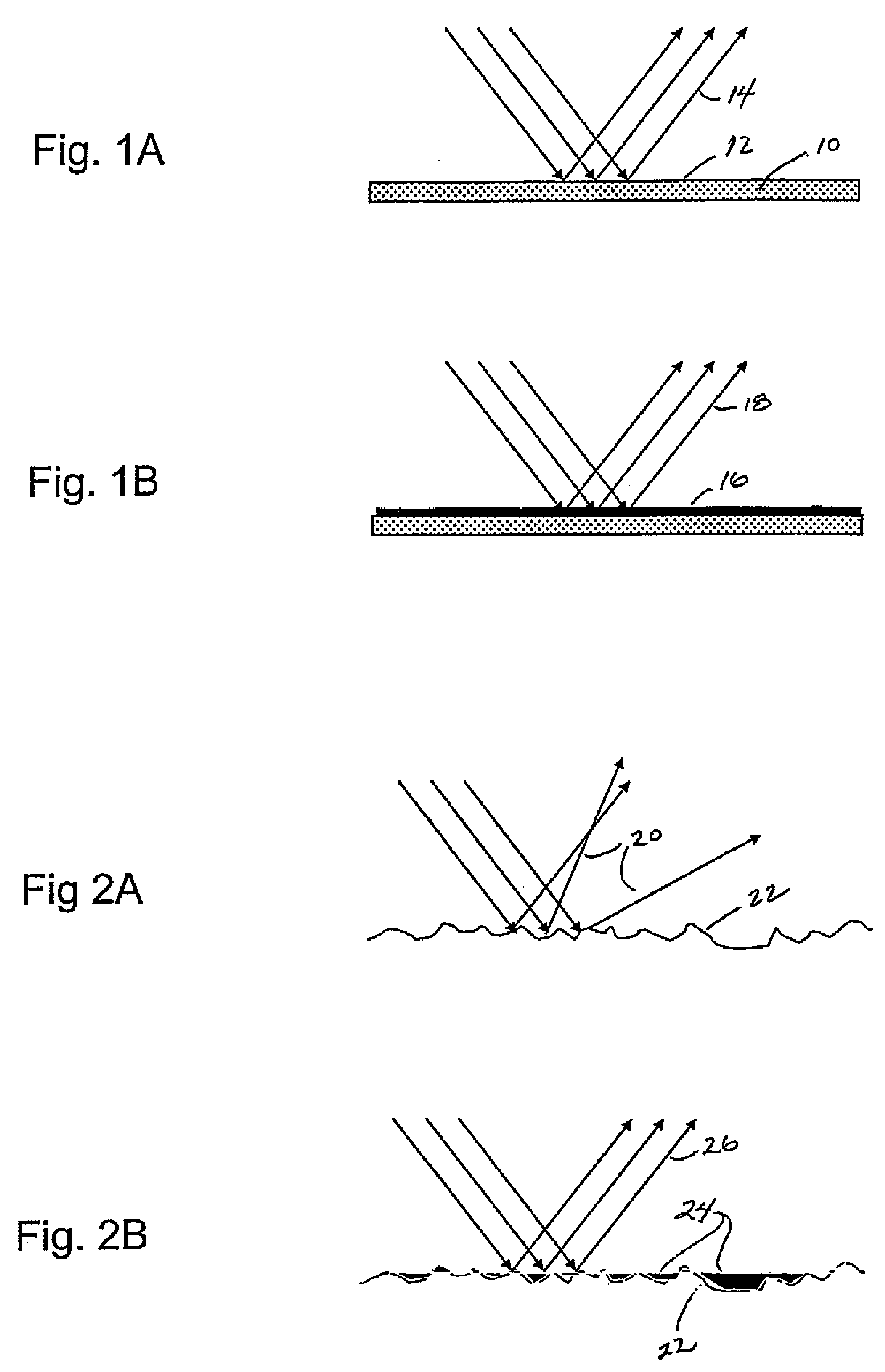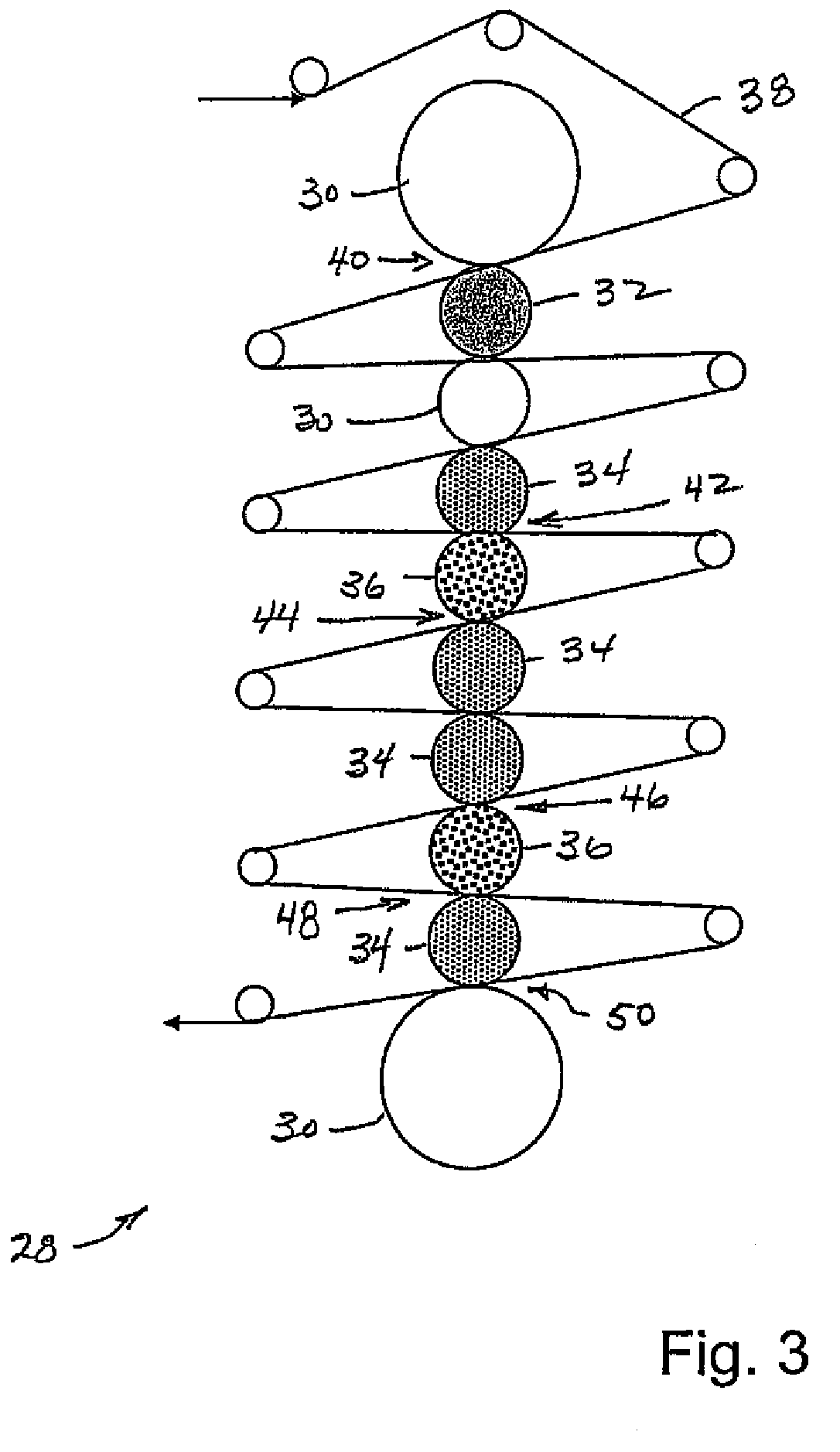Low glare, high print gloss printing paper
a printing paper and high print gloss technology, applied in the field of printing papers, can solve the problems of increasing the delta gloss of low glare papers, increasing the sheet gloss, etc., and achieve the effect of high print gloss and low glar
- Summary
- Abstract
- Description
- Claims
- Application Information
AI Technical Summary
Benefits of technology
Problems solved by technology
Method used
Image
Examples
example 1
[0037]A low glossing coating formulation was made, coated to a paper substrate, and subsequently supercalendered using specially treated tungsten carbide rolls. The coating formulation comprise of the following ingredients:
[0038]
Parts by WeightCoarse delaminated clay70Coarse carbonate20Calcined clay10Starch9Latex9Lubricant1
[0039]The coating was applied using short dwell type applicator at a coat weight of 4 pounds per side. After application, the coated samples were finished using a calender stack consisting of tungsten carbide coated rolls at surface roughness of 90 to 130 Ra. The paper is finished through multiple nips as shown in FIG. 2.
[0040]Samples of the resulting paper were printed on a conventional offset printing press and tested for gloss. Samples of a standard gloss paper were also tested for comparative purposes. The results were as follows:
[0041]
Standard Gloss PaperExample 1 SampleSheet Gloss3727Roughness2.18 μ2.42 μAfter Printing(Parker Print-Surf)1-Color Print Gloss57...
example 2
[0042]Comparative laboratory tests were conducted on a standard base paper coated with a preferred coating composition of the invention (sample 1255) and four variations from the preferred coating composition. All test samples were subject to the same laboratory calendering to simulate rough roll calendering as described above. The test data is set forth in table below shows improved delta gloss for the preferred composition (sample 1255) with a pigment comprised of 80 parts of coarse delaminated clay with a particle size of 8.6 microns and 20 parts coarse calcium carbonate.
PUM
| Property | Measurement | Unit |
|---|---|---|
| Horiba particle size analyzer | aaaaa | aaaaa |
| average particle size | aaaaa | aaaaa |
| Horiba particle size analyzer | aaaaa | aaaaa |
Abstract
Description
Claims
Application Information
 Login to View More
Login to View More - R&D
- Intellectual Property
- Life Sciences
- Materials
- Tech Scout
- Unparalleled Data Quality
- Higher Quality Content
- 60% Fewer Hallucinations
Browse by: Latest US Patents, China's latest patents, Technical Efficacy Thesaurus, Application Domain, Technology Topic, Popular Technical Reports.
© 2025 PatSnap. All rights reserved.Legal|Privacy policy|Modern Slavery Act Transparency Statement|Sitemap|About US| Contact US: help@patsnap.com



